The iconic Rolex brand has captivated watch enthusiasts and collectors worldwide with its timeless yet designs and meticulous attention, to detail. However, a common query among Rolex fans is, “How many Rolexes are made a year?” Answering this question isn’t as simple as it seems given Rolex’s reputation for keeping its production numbers under wraps. In this article we will delve into the realm of Rolex manufacturing exploring the factors that impact their annual output and providing an estimate of how many Rolex timepieces are crafted each year. Our focus will be on models, like the Submariner and Daytona. By the conclusion of this piece, you’ll gain insight into the allure surrounding Rolex’s production figures and understand why these watches hold such high value in the secondary market.
Rolex’s Production Philosophy

Rolex’s core philosophy, in watchmaking emphasizes quality over quantity. Unlike other high-end watch companies Rolex doesn’t prioritize mass production to meet market needs. Instead, the brand dedicates itself to upholding top notch craftsmanship and precision in every timepiece they craft. This dedication to excellence is evident in the testing and quality control procedures implemented at every production phase, from sourcing materials to the final inspection of each watch.
By limiting the number of watches produced Rolex ensures that each piece carrying its name reflects the brand’s standards. This strategy maintains the exclusivity and prestige linked with the Rolex name, and it also guarantees that every watch is a true work of horological artistry. The scarcity of Rolex watches on the market adds to their allure and worth making them highly coveted by collectors and enthusiasts.
Moreover, Rolex’s manufacturing approach enables it to adapt to changing market trends and consumer preferences while upholding quality standards. By monitoring industry shifts and customer input Rolex can adjust its production tactics to focus on their most popular Rolex models all the while incorporating innovative features and materials that resonate with their sophisticated clientele.
The agility of Rolex paired with its dedication to excellence has been key to keeping the brand at the forefront of the luxury watch industry for years.
Estimating Rolex’s Annual Production
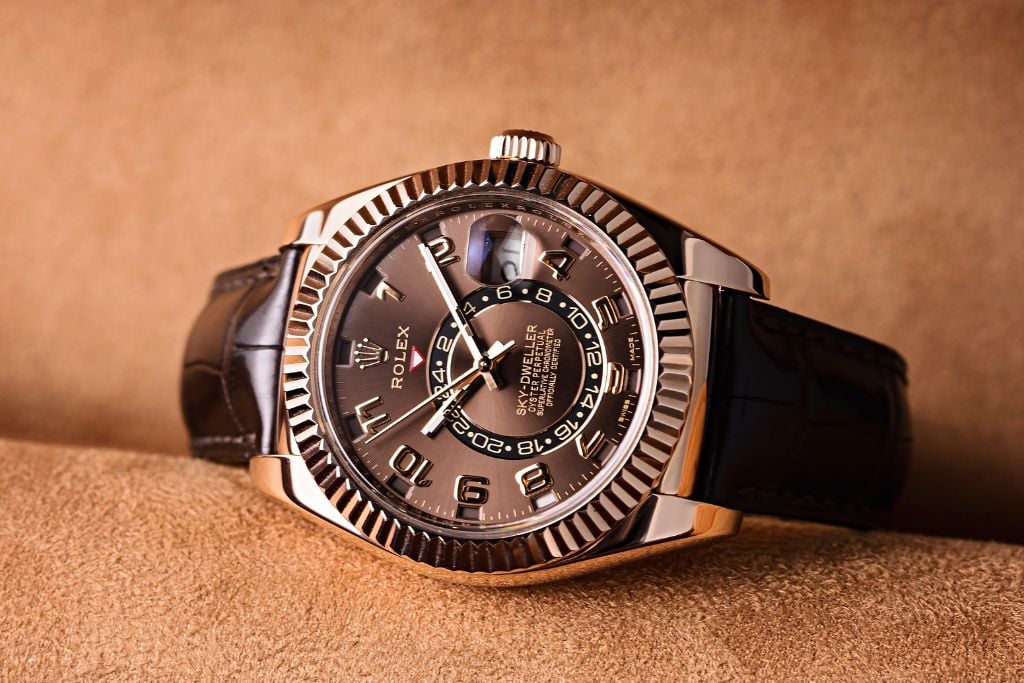
Determining the number of Rolexes made annually poses a challenge due to the brand’s tight-lipped approach to sharing their production figures. As a private company Rolex is not required to disclose this information. This air of secrecy has sparked curiosity and has added an aura of mystery around the brand. Nonetheless by examining data and industry analyses we can form an educated guess about Rolex’s production volume.
Industry experts and watch enthusiasts estimate that Rolex produces one million timepieces each year. This calculation considers factors like the company’s known manufacturing capacity, global network of dealers selling Rolex watches, and the availability of these timepieces in the market. While one million watches may seem like an amount it’s important to consider the demand for Rolex watches and their presence across various countries.
It’s important to note that Rolex’s annual production levels can fluctuate depending on factors such as market dynamics, consumer preferences, and new model releases. In times of uncertainty Rolex may adjust its production numbers strategically to maintain exclusivity and protect the brand’s value. On the hand when launching anticipated models or commemorating significant milestones Rolex could increase production to meet the heightened demand.
Though it’s challenging to pinpoint a number an estimated annual production of, around one million Rolexes showcases the brand’s presence in the luxury watch market. This figure also underscores how Rolex carefully balances meeting consumer demand while upholding the exclusivity and prestige associated with its timepieces. This delicate balance contributes to the premium prices of their watches often sparking curiosity as to why Rolex watches are so costly. In the following section we will delve into the production numbers of Rolex models like the Submariner and Daytona to better understand how these iconic watches impact the brands overall output.
Production Numbers for Popular Rolex Models

While Rolex keeps its production figures under wraps watch enthusiasts and industry experts have made guesses about the production volumes of some coveted models from the brand. By examining factors such as availability in the market waitlists and demand trends for watches like the Submariner and the Daytona we can estimate their production numbers.
Rolex Submariner
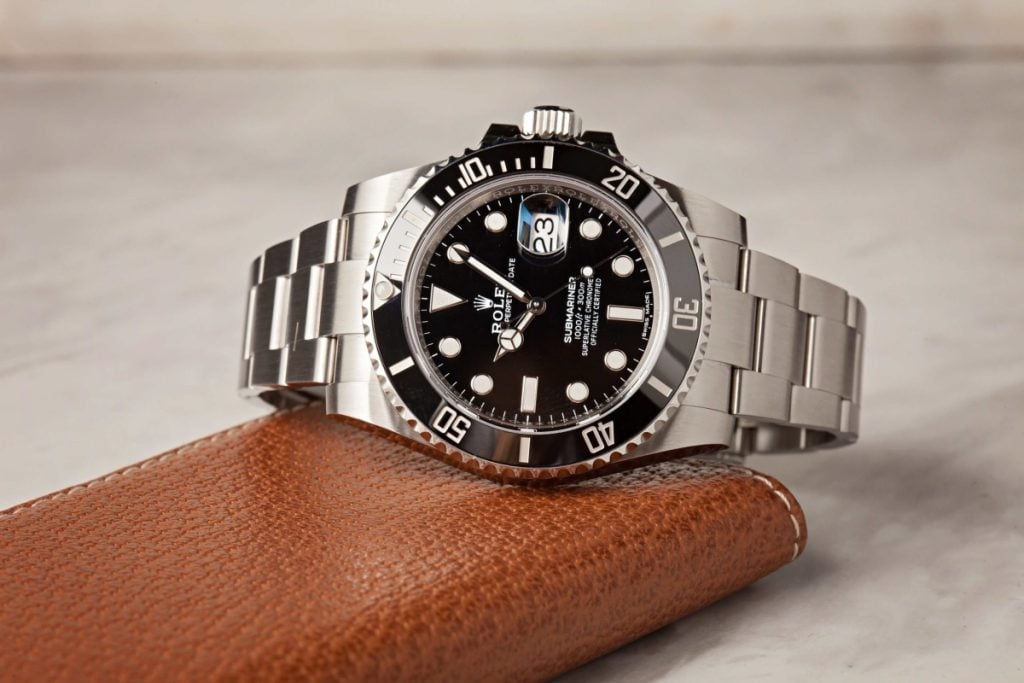
The Rolex Submariner stands out as one of the most well-known watches globally. Since its introduction, in 1953 this timepiece has cemented its status as the dive watch celebrated for its build waterproof features and enduring style. Its popularity has continued to soar, with vintage editions fetching high prices at auctions and contemporary versions remaining highly coveted by enthusiasts. Learn more about investing in the Rolex Submariner.
Estimating the production figures of Rolex Submariners sparks discussion within the watch community. While official data remains elusive it’s believed that Rolex manufactures 100,000 to 150,000 Submariners annually. This estimation takes into account factors like the model’s popularity, availability at authorized retailers, and the rate at which new Submariners appear in the market.
Rolex Daytona
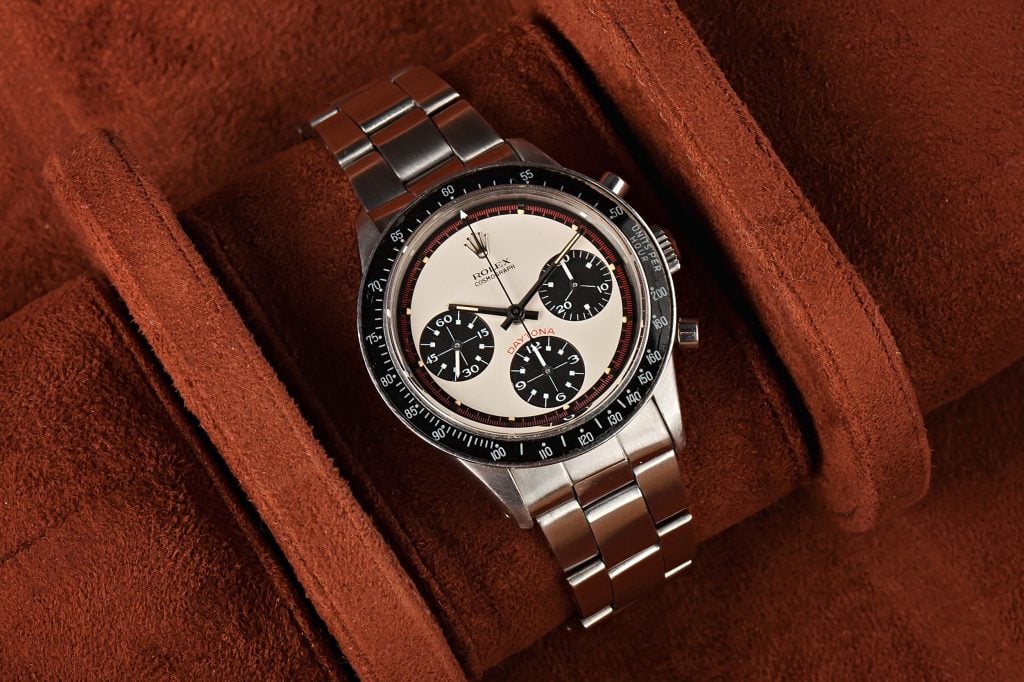
Moving on to the Rolex Daytona – a model named after Florida’s famous racetrack – it holds an important place among watch aficionados. The Daytona launched in 1963 as a chronograph tailored specifically for race drivers, and since then the model has evolved into a symbol of luxury and performance excellence. Certain vintage variants like the Paul Newman Daytona fetch ultra-high prices at auctions due to their rarity and allure.
Paul Newmans personal Rolex Daytona, a timepiece he cherished for years set a groundbreaking record when it fetched $17.8 million in 2017 solidifying its position as one of the most expensive Rolex watches ever sold.
The Rolex Daytona is highly coveted due to its popularity and limited availability often proving to be a model to acquire through dealerships. 20,000 to 30,000 Daytonas are crafted by Rolex annually positioning it as one of the brands offerings. The scarcity surrounding the Daytona has only heightened its desirability with waitlists at retailers stretching over extended periods.
Other renowned models from Rolex like the GMT-Master II, the Yacht-Master, and the Sea-Dweller boast significant production numbers although not as high as the Submariner or as low as the Daytona. These models contribute significantly to Rolex’s production output while maintaining an attractive range within the brand.
Understanding the production figures for these Rolex models sheds light on how Rolex strategically balances exclusivity with meeting consumer demands. By managing production and distribution of their sought-after watches like the Submariner and Daytona Rolex ensures these iconic timepieces retain their value and allure among collectors and enthusiasts alike.
Factors Influencing Rolex Production
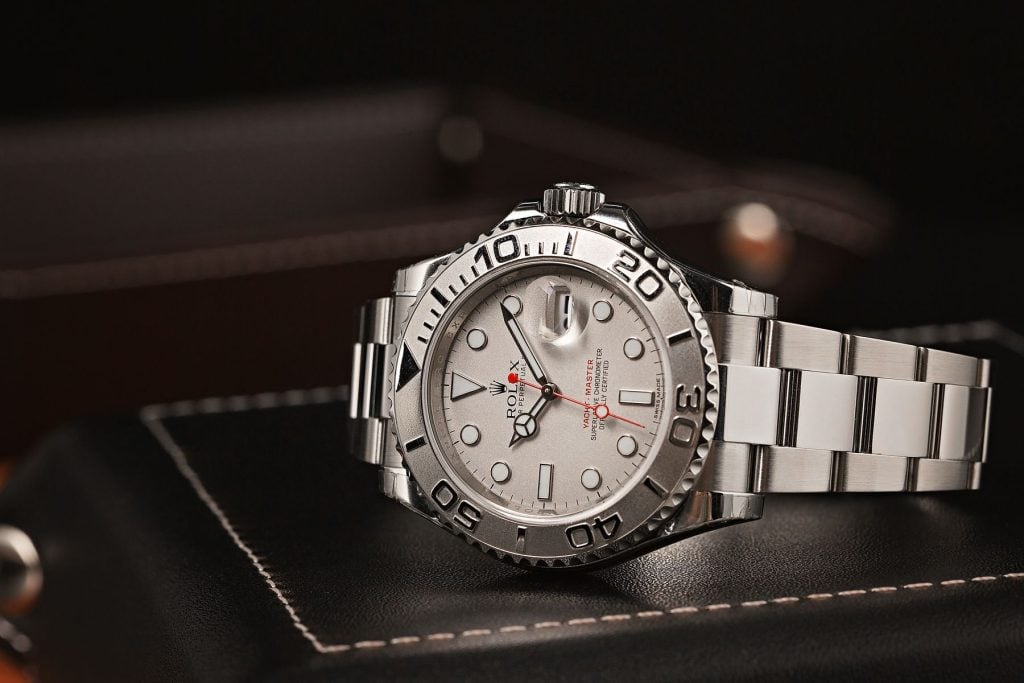
Rolex doesn’t have fixed production numbers; they can vary due to factors both from within the company and from external sources. These factors are crucial in deciding how many Rolexes are manufactured each year and influence the brand’s ability to adjust to changing market trends and customer preferences.
One key element affecting Rolex’s production is their progress in technology and manufacturing methods. Being a brand known for its dedication to innovation and excellence, Rolex consistently invests in cutting edge equipment and techniques to enhance the efficiency and accuracy of its watchmaking processes. For instance, innovations like the Rolex Paraflex shock absorber and Chronergy escapement have improved the durability and precision of Rolex movements allowing them to create high quality watches while streamlining production.
Another factor influencing Rolex’s production is shifts in consumer demand and preferences. As consumer tastes change and new trends emerge Rolex must adapt its manufacturing approaches to meet customers’ evolving desires. For example, the rising trend for larger watches has led Rolex to introduce models such as the Sea-Dweller 43mm and the Yacht-Master 42mm.
The growing popularity of vintage inspired designs has also inspired Rolex to introduce models like the GMT-Master II “Pepsi” and the Daytona “Panda,” showcasing a blend of tradition and modern appeal. Global economic factors and luxury market dynamics also shape Rolex’s production strategy. In times of uncertainty luxury brands like Rolex may adjust production levels to maintain their exclusivity and brand value. Conversely periods of prosperity can drive up demand for luxury watches prompting Rolex to ramp up production to meet the rising interest in its timepieces.
Rolex’s manufacturing output is influenced by factors such as raw material availability and the capacity of its production facilities. Renowned for its use of high-quality materials like 904L steel, 18ct gold and precious gemstones in watchmaking, any disruptions in the supply chain can impact Rolex’s production numbers. The efficiency of Rolex’s state of the art manufacturing facilities in Switzerland staffed with skilled artisans also plays a role in determining the brands annual output.
Considering these aspects Rolex can make informed decisions regarding its production quantities ensuring a delicate balance between meeting customer needs and preserving the exclusivity and prestige linked to its timepieces. The brand’s ability to adjust to evolving market trends and consumer tastes while staying true to its dedication to excellence and innovation speaks volumes about its lasting success in the world of luxury watches.
The Influence of Limited Production on the Secondhand Market
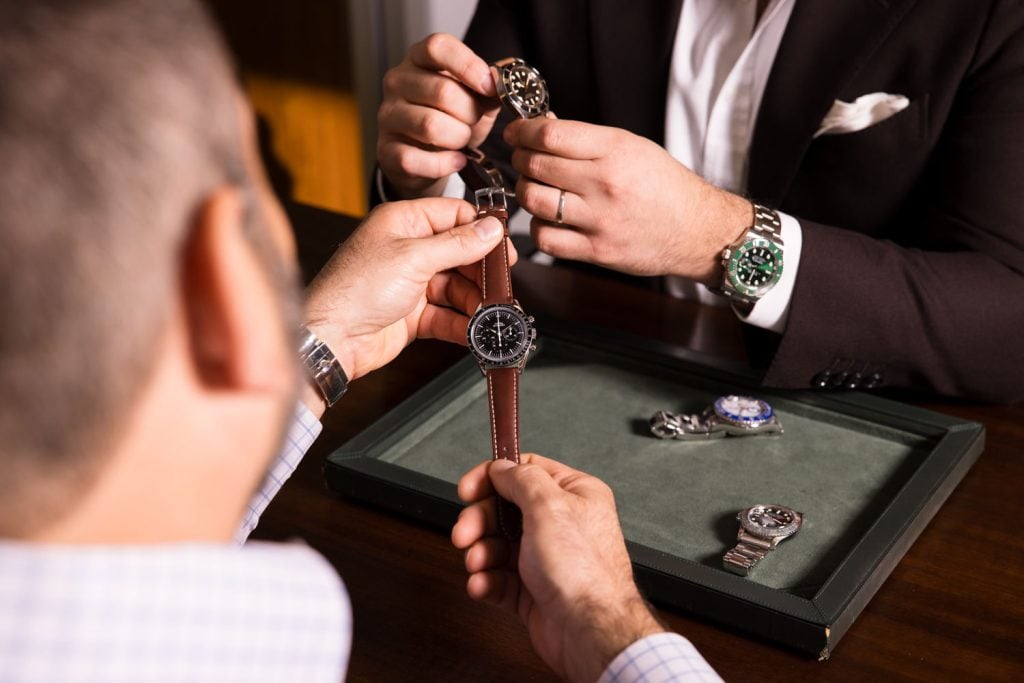
Rolex’s control over production numbers significantly influences the secondhand watch market. The rarity of Rolex models alongside their enduring appeal has given rise to a secondary market where pre-owned Rolexes are highly coveted by collectors and aficionados.
The restricted availability of Rolexes in the market has led prospective buyers to explore pre-owned alternatives. This surge in demand has fostered a steady market, where prices for pre-owned Rolexes often remain near or even surpass their original retail prices. This phenomenon is especially evident for sought after models like the Daytona and Submariner which can fetch a premium in the owned market due to their scarcity and overall allure.
Specialized retailers that deal in pre-owned watches like Bobs Watches play a vital role in meeting the increasing demand for Rolexes in the secondary market. These retailers offer a range of used Rolex timepieces ensuring that customers can find the models they desire even if they are not easily accessible through authorized sellers. By creating a transparent platform for purchasing and selling secondhand Rolexes these retailers contribute to the fluid nature of the secondary market while providing an alternative option for individuals wondering how to buy a Rolex watch without enduring long waitlists. Additionally reputable dealers of owned watches possess the necessary knowledge and experience to verify the authenticity of Rolex timepieces, which is crucial in a market where counterfeit products are prevalent. For buyers who may be uncertain about the authenticity of a Rolex watch, buying from a specialist in pre-owned watches can offer assurance and confidence in the authenticity of their purchase.
The limited availability of Rolexes has also enhanced their potential as investments. Many collectors and enthusiasts consider Rolex watches as an investment option because their value tends to increase over time due to their scarcity and enduring popularity. This is especially true for vintage Rolexes, which can command prices at auctions owing to their rarity and historical significance.
The allure of investing in Rolexes has increased the demand, for owned watches as buyers look for timepieces that not only represent luxury and status but also offer a chance for profitable investment. It’s important to note that the pre-owned Rolex market is influenced by factors like shifting consumer tastes, economic conditions, and the release of new models, all of which can impact the value and desirability of pre-owned Rolexes. Nevertheless, due to the brand’s enduring popularity and the scarcity of its watches the secondary Rolex market has remained relatively steady and strong.
In summary Rolex’s limited production numbers have significantly shaped the pre-owned watch market. The rarity of models has driven up demand leading to a flourishing market where preowned Rolexes are highly coveted. Specialized dealers have emerged to meet this demand offering a platform for buyers and sellers alike. The investment potential in Rolexes has added further excitement to the pre-owned market. Despite fluctuations in value, Rolex’s timeless appeal and exclusivity have played an important role in maintaining a robust secondary market that continues to attract collectors and enthusiasts worldwide.
How Many Rolexes Are Made a Year: Final Thoughts
In our exploration of the production volume of Rolexes we have delved into the brand’s approach to manufacturing and its influence on the high-end watch market. While the specific yearly output is kept under wraps estimates from experts hint at a production of one million timepieces. This careful balance between meeting consumer demand and maintaining an air of exclusivity contributes to the brand’s allure and value.
Rolex’s meticulous management of production quantities has bolstered the enduring popularity and worth of its watches, particularly renowned models like the Submariner and Daytona. The scarcity factor, coupled with Rolex’s unwavering dedication to excellence and accuracy has fostered a market where collectors and enthusiasts alike pursue investment prospects as well as a piece of horological heritage.
As Rolex continues to evolve in response to the shifting luxury watch industry landscape its enigmatic charm remains undiminished. The brand’s mastery in regulating production levels has undoubtedly been pivotal in solidifying its reputation as a symbol of luxury and precision ensuring that Rolex will enchant watch aficionados, for generations to come.








